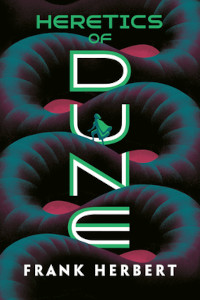
Heretics of Dune by Frank Herbert.
Highlights
“I was addressing the way a significant life extension has produced in some people, you especially, a profound knowledge of human nature.” “We live longer and observe more,” he said. “I don’t think it’s quite that simple. Some people never observe anything. Life just happens to them. They get by on little more than a kind of dumb persistence, and they resist with anger and resentment anything that might lift them out of that false serenity.” — p. 166
You have only one awareness here—the screen of the magi: Imagination! Here, you learn what it is to be human. You are a creator of order, of beautiful shapes and systems, an organizer of chaos. — p. 313
It is your fate, forgetfulness. All of the old lessons of life, you lose and gain and lose and gain again. — p. 377
There was a man who sat each day looking out through a narrow vertical opening where a single board had been removed from a tall wooden fence. Each day a wild ass of the desert passed outside the fence and across the narrow opening—first the nose, then the head, the forelegs, the long brown back, the hindlegs, and lastly the tail. One day, the man leaped to his feet with the light of discovery in his eyes and he shouted for all who could hear him: “It is obvious! The nose causes the tail!” — p. 402
“There are always means of transferring large sums or selling power,” she said. “I do not speak of the power that runs factories but of the power that runs people.” “And that usually passes under the strange names of government or society or civilization,” Teg said. — p. 484
“Never underestimate the power of an idea,” Taraza said. “The Atreides were ever philosophers in their governance. Philosophy is always dangerous because it promotes the creation of new ideas.” — p. 491
“You seldom learn the names of the truly wealthy and powerful. You see only their spokesmen. The political arena makes a few exceptions to this but does not reveal the full power structure.” — p. 521